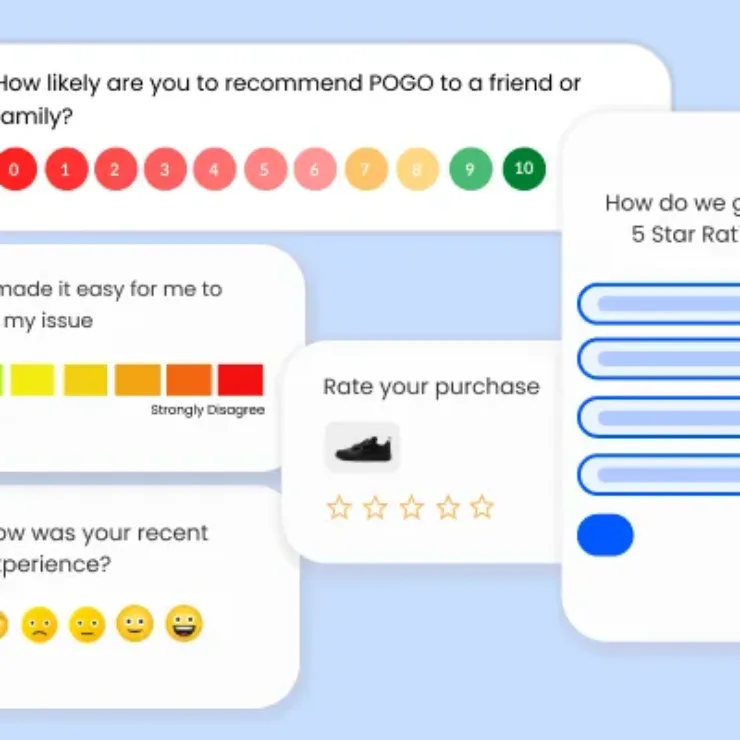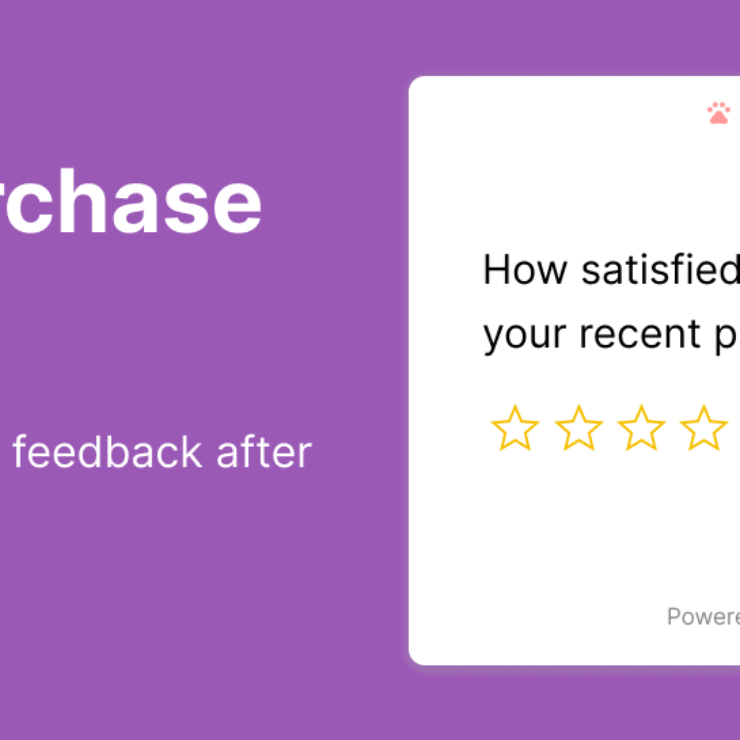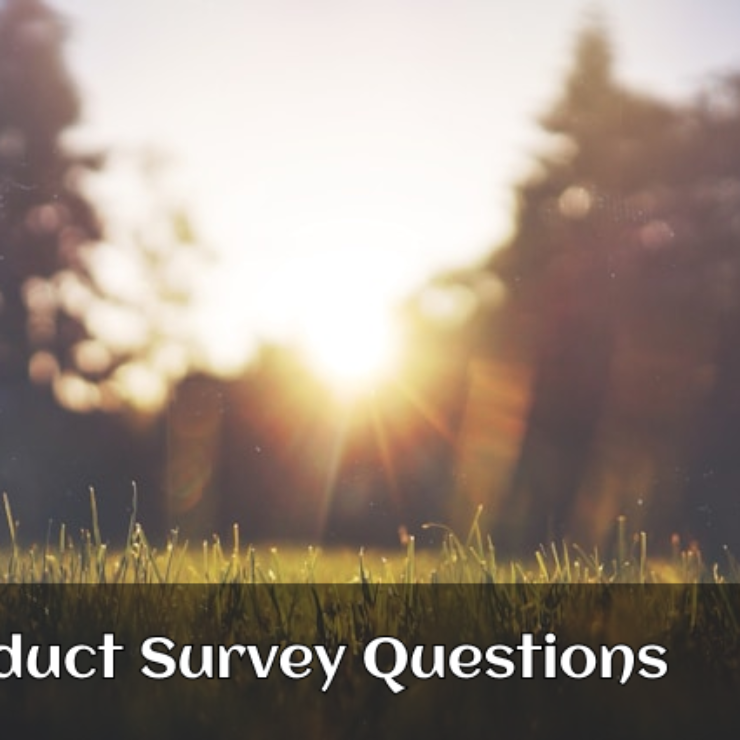Last updated on:
5-star surveys could be the most popular survey method around. If you have done any transaction online, you would have received a survey to rate your experience. For example, you could have booked a cab using Uber or traveled by an airline. Or stayed at a hotel, and dined in a restaurant. And you would have received a 5-star survey asking for your experience. Uber asks you to rate your experience with the driver and cab on a 5-point scale. A 5-point rating scale is also used by airlines, restaurants, online marketplaces, hotel booking sites, and so on.
Businesses of all kinds use this rating scale to survey their customer and understand their experience. Using the feedback, they then try to improve their products, services, and overall customer experience.
In this article, we are going to dive deep and understand what is a 5-star survey, when to use the same, and how to create one.
Table of Contents
TL;DR
- 5-Star surveys are one of the most popular survey methods to collect the customer experience. It’s widely used and understood by customers worldwide, which further increases its popularity.
- A 5-star survey is a transactional survey as opposed to a relational one. A transactional survey is meant to capture customer feedback after a particular transaction or use of a product, and so on. Relational surveys are sent to the customer to understand overall perception and feedback. Net promoter score survey is an example of a relational survey.
- Here are the typical use cases of a 5-star survey. Sending customers surveys a few days after they have received a product from an online store. Take feedback after they use a service, such as – a salon, spa, hotel, restaurant, airline, etc. 5-star rating scale is used to ask for their feedback on specific aspect of their experience as well. For example, in the case of a hotel, it can be used to understand the overall feedback, booking experience, check-in experience, cleanliness, food, and so on. Asking customers for their feedback after they have used a feature of the software or app. This survey can also be sent after a support issue is resolved to take agent feedback.
- This survey is universally understood. Hence can be used in a global context where users may speak multiple languages. Can be used both in a professional business-to-business (B2B) as well as personal business-to-consumer (B2C) context. B2C marketplaces such as Uber, Yelp, Airbnb, Apple app store and many others use a 5-star rating scale to take their customer feedback across multiple aspects of customer experience. On the B2B side, software marketplaces such as G2, and app marketplaces such as Salesforce App Store and Shopify App Store are examples of B2B businesses using the 5-star rating scale.
- A 5-star survey can have the first question asking about the overall experience of the recent transaction. The follow-up questions can be added to understand further experience from the customer. These questions can be 5-star questions, scale questions, choice questions, or any other open-ended questions to understand more about the voice of customers.
- The survey can be sent over Email, embedded in your website or App, or a survey link can be sent directly to the customers over any channel. You can use an All-in-one Survey Tool like Affiniv to create a 5-star survey, send the survey over Email, and embed it in your website or App. Also, you can use the tool to analyze the customer feedback and closing the loop.
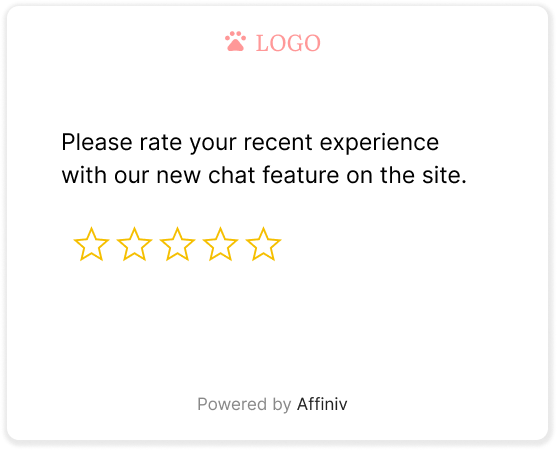
Want to create and send a 5-star survey in a few minutes?
Affiniv is the simplest way to measure customer metrics like NPS, CSAT and act upon your customer feedback.
What is a 5-Star Survey?
A 5-Star survey, as its name suggests shows 5 stars to accept feedback from their customer. The customer chooses the highest score by selecting the 5th star and the lowest score by selecting the first star. Each end of the star can be marked by labels with a clear indication of a low score and a high score. This survey aims to take customer feedback after they have done a transaction.
Typically selection of 1 star can be the lowest, and 5 is the highest. Along with the first question, multiple follow-up questions can be set up to take user feedback and collect the detailed voice of the customer. These questions combined can unlock the key insights to help a business enhance its customer experience.

Why use a 5-Star Survey?
5-Star surveys are a great way to collect feedback from your customers across various touch-points. Compared to numeric rating scales, 5-star rating scales are modern and universally understood. Add to that the widespread use of the same across the industry means that your users would already be familiar with this survey method. Here are a few top reasons to use the 5-star rating scale for your use case.
- 5-Star surveys are already widely popular and are used across the world and across industries. So your customers should already be familiar with the same.
- It’s pretty easy and quick for users to understand and respond. This is because the 5-star rating scale format is familiar and the question can be relatively shorter.
- It can be used across the user base worldwide without the language barrier. In that sense, it’s somewhat similar to smiley face surveys. The key difference is that smiley face surveys should be used to measure customer sentiment. Also, the Smiley face survey may not seem appropriate in B2B content. 5-Star surveys are a lot more versatile and can be used across a large number of use cases.
- The previous point leads us to versatility as the 5-star surveys can be used across industry segments. Both business-to-consumer (B2C) and business-to-business (B2B) companies use this survey across a wide range of use cases.
- As the survey score calculation method for a 5-point rating scale is universal, you can easily benchmark your performance with the industry.
- 5-star ratings and reviews collected from your customers can be displayed on the website against the product that you are selling.
How to create a great 5-Star Survey
Now that we have explored the benefits of the 5-star survey, let’s see how we can create that perfect 5-star survey.
- Start with your customer journey and identify the touchpoints where you want to survey your customers. If you are a software SaaS company, your customer touchpoints could be as follows. Customer Signup, Demo, Follow-up Demo, Price Negotiation, Onboarding, Periodic customer review by customer success, customer contact for support issues, contract renewal, etc.
These steps are just examples and may not be totally applicable to your business. Similarly, if you are an e-commerce company, your touch-points could look like – Site visits, orders placed, orders received by customers, product usage, support issue contact and resolution, repurchase, etc.
- Identify the points of survey and type of survey: Once you have identified the touch-points, you should decide what kind of survey is needed at various of these touch-points. In the above example of the software company, you may want to collect customer feedback after the demo, after the onboarding is complete, periodically every month or every quarter, after the resolution of the support tickets, etc. You can decide on the right kind of survey at these steps.
- 5-point rating scale question: Time for us to create the first and the most important question – the 5-point rating scale question. My recommendation would be to keep it contextual, short, and clear.
A 5-star survey rating is done in the context of a transaction. Hence you should keep it highly contextual. An example of a contextual question could be – how do you rate the quality of the product <x>? Here <x> is the product the user has recently bought from the e-commerce store.
And the question should be short and clear. After all, the key benefit to using the 5-point rating scale in the first place is that the user can respond quickly without any friction. Here are some examples of the same –
– Please rate your recent interaction with our support agent.
– Please rate your experience with using our cab service/dining at our restaurant/staying at our hotel.
– How do you rate the quality of product <X>
– Please rate our website experience
Also, you should look to avoid jargon and difficult, confusing words, which may lead to poor understanding and a low response rate.
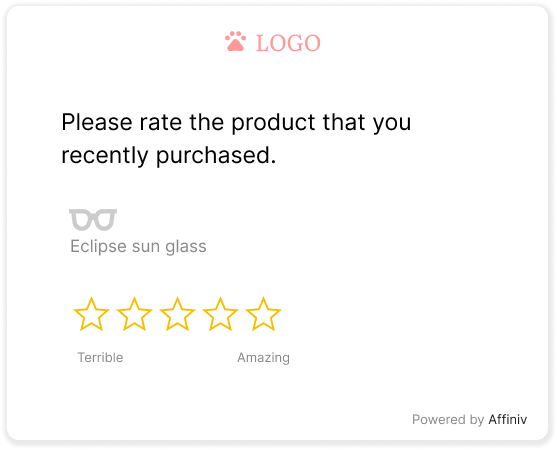
- Use appropriate labels: Using labels can provide further clarity to a 5-Star Survey. On a 5-star rating scale, some of the users may be confused about which side is the highest rating and which side is the lowest. You should provide labels to clarify the same. That way the question response won’t be biased.
Here are some examples of labeling the scale appropriately.
– Please rate your interaction with customer support [Very Poor, Great]
– How do you rate the quality of the product [Very Poor, Amazing]
– How do you rate our website experience [Terrible, Amazing]
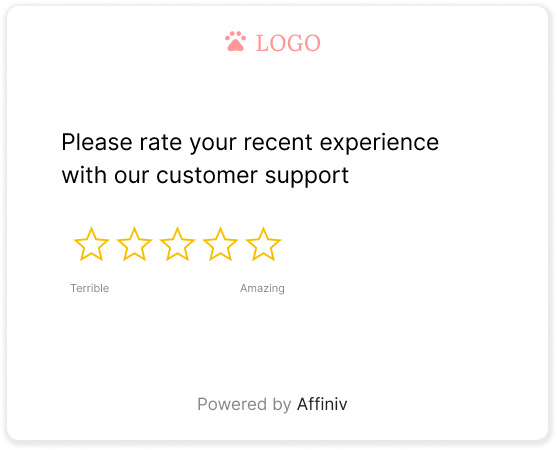
- Follow-up Question(s): After the first question, you should set up one or multiple follow-up questions to understand the reason behind the response. The follow-up questions can be other scales, such as numeric scales, choice questions, or open-ended questions. You should consider asking 3-5 questions and not going beyond 7 questions. Asking a larger number of questions can reduce the number of people who complete your survey.
Having said that, you must ask the relevant questions to get the right feedback so that you can understand the “why” behind the response. After all, learning the reason why the user rated you high or low can help you improve your customer experience. This can, in turn, help you increase the star rating for that particular product, process, or feature.
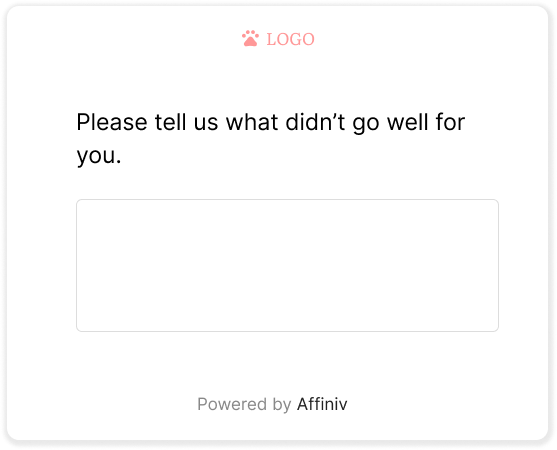
- Timing of your 5-star survey: When sending a 5-star survey, you should try to send it as soon as the transaction has happened. Or the customer has used the product feature. The sooner you send the survey, the experience is fresh in the mind of your customer. So the quality of response would be much better if sent earlier. One word of caution here. You should allow your user enough time to fully understand your product, be it software or physical, before asking for feedback.
If the timing is too early, this can result in lower response rate. Because the customer hasn’t fully understood your offering to provide an opinion. If it’s too late, then the experience is no more fresh and will reduce the quality of feedback. So you need to be careful to time the survey properly.
As an example, say you are creating a 5-star survey for an e-commerce apparel business. Sending a survey just after the product delivery can be too early as your customer may not have the opportunity to experience the product. If you send the product say after 20 days or so, it becomes a little too late. Depending on the type of product, you may want to send the survey within 10 to 25 days or so after the delivery.
If you use an all-in-one survey software like Affiniv, you can automate the survey workflow. That way a survey can go out after a fixed number of days from the event without needing any manual intervention.
Want to create and send a five star survey in minutes?
⭐️ ⭐️ ⭐️ ⭐️ ⭐️
With Affiniv, you can create 5-Star surveys and send them instantly via Email or Embed in your website/app.
How to calculate 5-Star rating?
Calculating the score of a 5-star rating survey is straightforward. You can simply add up all the scores and divide them by number of responses. The 5-star rating is simply the average of all scores. Consider the following example –
Let’s say 10 users responded to a 5-star survey. Their scores are 5, 5, 4, 3, 1, 5, 4, 5, 4, 2.
If we add the scores, it comes to 38. To calculate the rating, we divide 38/10 = 3.8.
The simplicity of calculation is another reason, the score of a 5-star rating is prominently displayed against the products and services online. The score being universal, can be compared and benchmarked against other products on the site.
When to go for a 5-Star survey?
Here are some use cases of 5-star surveys from the industry. This may help you decide your use case. The 5-star survey is versatile, which means it can be used in a wide variety of cases. Also, the 5-star survey is meant to be contextual or transactional. A 5-star survey should be used after a transaction. For example: someone uses a feature in your web or app, buys a product from an online store, rates a service provider on an aggregator platform after getting a service, rates a professional at a spa or salon after a session, and so on.
If you want to have a general survey about your company as a whole, you may want to choose a relational survey like NPS.
Here are some use cases from the industry on using 5-star surveys.
Use case 1: Product Review Surveys for an e-commerce brand
Let’s say an online e-commerce brand sells products via a website or app. A customer buys a product, which gets delivered after 5 days from order. The brand can send out product review survey, which is a 5-star survey, a few days after the product gets delivered. This survey can go out via email.
The stars and product images can be embedded in the email body so that the user can start responding directly inside the email. On click of a star, the user can be shown the survey page to fill out the additional questions. Embedding the star rating in the email increases the response rate as users find it easy to respond.
In the additional questions the brand can ask for a review and a headline. The review question can be a long answer question and review headline can be a short answer question.
The ratings and reviews can be published on the product display page after verification. Publishing user generated reviews on the product page increases customer trust. This can be pretty useful while selling product online. Few things to consider here are –
– Send survey after a few days from the product delivery, so that the user gets time to use the product
– Embed the stars and product image to get more responses
– Upload the product reviews on the website against the products
– Make sure that the ratings are visible on the Google search when someone searches for the product

Use case 2: 5-Star rating survey embedded in website/app
You can embed the 5-star survey in the website or app. This is typically done after a user does a transaction or uses a feature. The typical questions can be –
– How was your experience with using our <X> feature?
– Rate your recent onboarding experience on our website
– Please rate your recent website/app experience
The web survey can be shown to the user after she completes a transaction or uses a feature. As we have seen before, for this survey the timing of the survey is important. You can choose to display the survey just after the user has completed the transaction.

How to distribute a 5-Star rating survey?
So far we have seen what’s a 5-star survey, how to create one, and various use cases for the same. Once you have created a 5-star survey, you can choose to distribute it over multiple channels. Some of the popular ones are – sending the survey via Email, Embedding it in your website/app, Sending the link over a social media app like WhatsApp, etc. Every channel has its pros and cons. You should choose the right channel depending on where your users are.
Send 5-Star Survey over Email
You can embed the 5-star survey in the email body. This is the best method to get a higher response rate as opposed to simply sending the link or adding a button. Using an all-in-one survey tool like Affiniv, you can embed the 5-star survey in the email body pretty easily.
Embed 5-star survey in website/app
A 5-star survey can be embedded in your website or app using a tool like Affiniv. You can choose to show the survey on a particular page, or after the user has taken an action or completed a flow.
5-Star Survey using Affiniv
With Affiniv, it’s easy to create a smiley face survey and distribute it over multiple channels or modes like Email, Website, App, link, etc.
Here are the steps –
Step 1 – Create your free account with Affiniv at https://app.affiniv.com/createaccount
Step 2 – You will see your dashboard page with the option to create an NPS survey, a CSAT survey, a CES survey, or a custom survey. Choose the “Create New CSAT Survey” option
Step 3 – A CSAT template will be pre-selected for you on the next page. You can create or edit the first question to a visual scale question and select the option type “star”.
Step 4 – Create additional questions for your survey and move to the “Distribute” section.
Step 5 – Here you can distribute your survey over Email, Link, Kiosk, or embed it in your website using the simple code that’s shown on the page
Step 6 – Once you get the result, you can analyze the same on your AI-powered dashboard or send it to a mailing list. You can download the result and send the result to any analytics system or Google sheet.

Want to create and send a 5-star survey in 10 minutes?
Affiniv is the simplest way to create surveys and distribute them over email or embed in your website. And then analyze the responses on our analytics dashboard to derive key insights.


